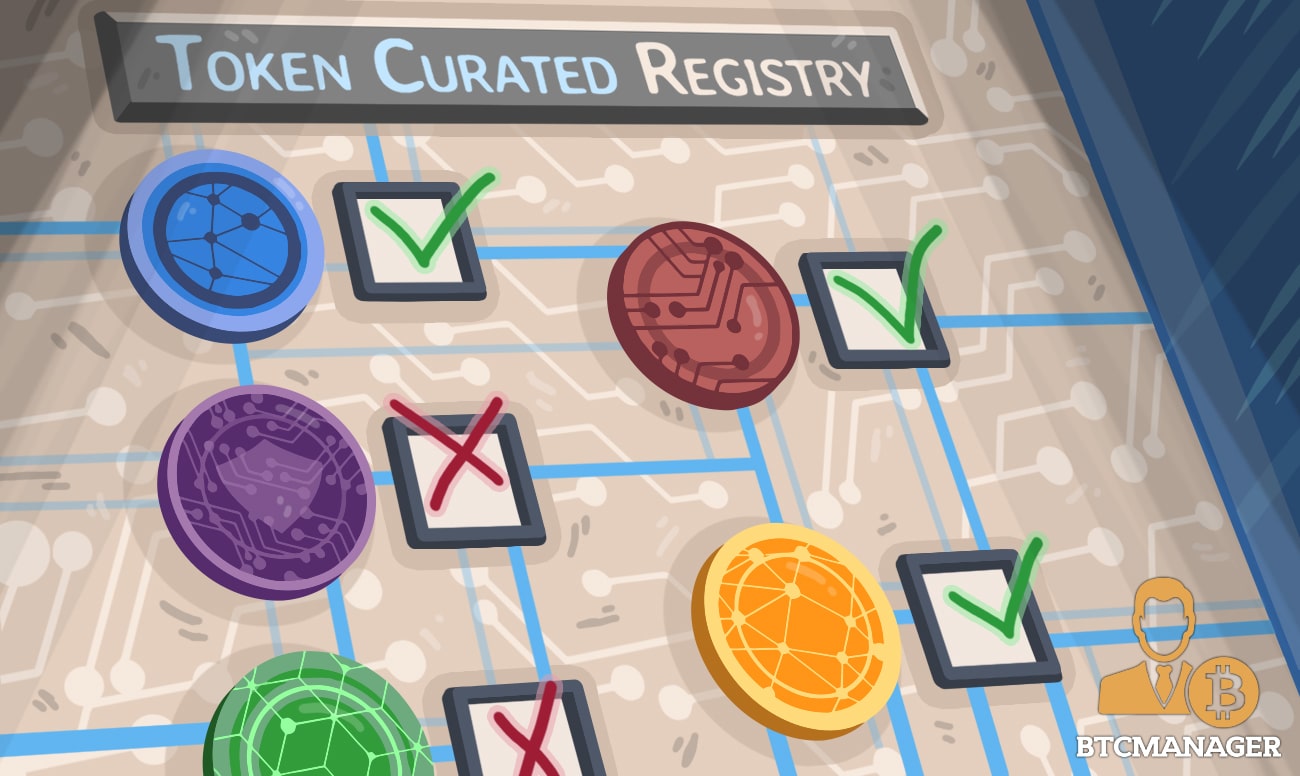All you Need to Know about Token Curated Registries (TCRs)

One thing that has become increasingly common throughout the crypto ecosystem is a Token-Curated Registry (TCR). This decentralized listing methodology plans to solve many issues that exist with lists today (credibility, bias, and trolling). This article will give a brief overview of what exactly is a TCR and why they are increasing throughout the crypto-sphere.
The Utility of Token-Curated Registries
The product of a TCR is a list. Lists that prove to be useful are always adequately curated (a top-colleges list to pick the best school to attend or the best movie list for some entertainment). If, for example, the best movie list could be accessed and edited by anybody at any time, the list would become an all-movies list and would cease to be useful.
The intrinsic tokens of token-curated registries are necessary elements of these self-sustaining systems which are used as public utilities. A TCR uses its internal tokens to assign curation rights proportionally to the relative token weight of each parties tokens. As long as there are parties who want to be curated into a given list, a market can exist in which the incentives of rational, self-interested token holders are encouraged towards curating high-quality lists.
TCRs are curated decentralized lists with intrinsic economic motivations for token holders to curate the content of each record. Self-regulation continues increasingly essential attribute to an ecosystem. When something can regulate itself, it must be running pretty efficiently. TCRs are incentivized self-regulating decentralized lists that will prove to be of much higher-quality from the lists produced by older traditional methods.
Three Types of uses in a TCR
There are three different user types in a TCR. Each class has its unique, rewarding incentives and has various interactions with the registry itself. TCRs are indeed a win for each of the three types of its users as consumers look for high-quality lists, candidates want to be included in such lists, and token holders desire to increase the price of the tokens they hold.
Consumers
High-quality research most always leads to a high-quality purchase. No matter what market you are in, consumers want high-quality information about the products they are purchasing. When consumers make a purchase based on their trust in a list and they are disappointed in the product, not only are consumers let down, but they lose faith in advertising, businesses, and institutions as a whole. TCRs will help prevent consumers from being let down from low-quality lists.
Candidates
To be frank, candidates, also referred to as listees want the attention and consideration of consumers. By being listed, they receive that desired attention and compensation from the consumers. Being listed on a TCR gives the consumer even more confidence in considering their product.
Token Holders
Both token holders and candidates want to keep demand for the token high, as this increases its price. They keep demand for the token high by producing high-quality lists, continuously. If listing qualities are high, then consumers will more likely be interested in the registry, resulting in an increasing desire for candidates to be listed on the record, which will increase demand for the tokens. This means that there is a direct financial benefit for token holders to curate the lists expertly.
Incentives from TCRs
To make a TCR function properly, candidates must make a deposit of the registry’s intrinsic token to be considered for listing. If a candidate passes the vetting process and is deemed “good,” then they are listed. However, candidates may keep this deposit or withdraw it at any time should they have a change of heart over being listed. If a candidate is deemed to be “bad,” that candidate’s application is given to token holders to challenge.
If challenged and then rejected, that candidate’s deposit is forfeited and divided to the token holders who participate in the challenge process as a reward.
This deposit policy will prevent Candidates from applying who will be rejected, as this financial loss will work as a deterrent. A movie which had no awards and only 50,000 views in theaters its first year is not likely to be admitted to the registry of best films of the year, and like any rational person, they should not bother with a pointless application.
What may seem like a disadvantage, is genuinely and advantage as token holders have an incentive to challenge and reject every candidate to their registry in the interest of increasing their holdings, while better reviewing candidate’s applications. It is indeed in the best interests of token holders to behave strategically and curate high-quality lists.
Processing Candidate Applications
The listing application process begins when the candidate makes the required deposit in the registry’s intrinsic token, and that deposit is kept for the duration of the listing. After an application is submitted, there is a period during which an application may be challenged. If this period passes without a challenge against the form, the candidate becomes a listee.
If an application should be challenged, the candidate’s application status is determined then by the result of the challenge. By carefully reviewing candidates, TCRs may show to be genuinely reliable lists.
How to Challenge an Application
A challenge may be initiated against candidates in the challenge stage, and against listees as well. A problem starts with a token holder staking a minimum deposit of against an application or listing.
When a challenge has begun, a snapshot of the registry’s current parameters is stored with the problem. Then, the vote starts and any token holders may participate in the vote even if they were not a party to the challenge. When the vote has reached its conclusion, either the challenger or candidate’s deposit is forfeited. A percentage of the lost deposit is awarded to the winning party as compensation for that party’s capital risk in their original challenge deposit.
The rest of the forfeited deposit is distributed to the winning voters in the majority according to token weight. Token voters in the minority group neither lose tokens nor receive any reward as the network wants everyone does make a vote without being discouraged from having an opinion separate from the majority.
If the challenge was made against a candidate’s application, then at its conclusion the candidate may or may not become a listee. If the challenge is against a listing, however, then the challenge’s completion will determine whether the listing may or may not be deleted.
This helps prevent low-quality candidates from making a list, but it also helps remove listees when their product is no longer of high-quality.
Voting
Whether or not an application is accepted or whether a listing is deleted is based on the voting process. The voting processes in TCRs are token-weighted and commit-reveal.
The token-weight proportional method is essential to give users with the most at stake the most vocal in the voting process. This incentivizes the token holders to exercise the greatest diligence as they have the most at stake. The method of commit-reveal is important not to allow the voting process to influence voters to vote in any other way than that which they feel will be most productive for the registry’s curation.
Maximum token liquidity will encourage widespread participation in the voting process.
Trust in TCRs
One of the most positive aspects of a TCR is its credibility. With the community incentives to challenge applications as well as listees, the TCR ecosystem can self-regulate and fight off many common attacks. People can be confident that TCR ecosystems help protect against trolling (a troll, for many randoms reasons, might try to add listings to a registry which do not satisfy the registry’s essential criteria), madman attacks (purchasing the majority of voting tokens and populating the registry with low-quality listings), as well as registry poisoning (when a listed entity becomes of degraded quality after being admitted to the record).
While these are just a few problems with lists in general, there are many more problems this decentralized registry will help prevent and solve shortly.
Conclusion:
TCRs bring a new type of list to the world. A decentralized list where token holders are incentivized to challenge low-quality applications and listees, encouraging high-quality records. Consumers, candidates, and token holders all benefit from TCRs. This is a win-win-win registry system, and it is likely we will see an increasing number of them over the next few years.













